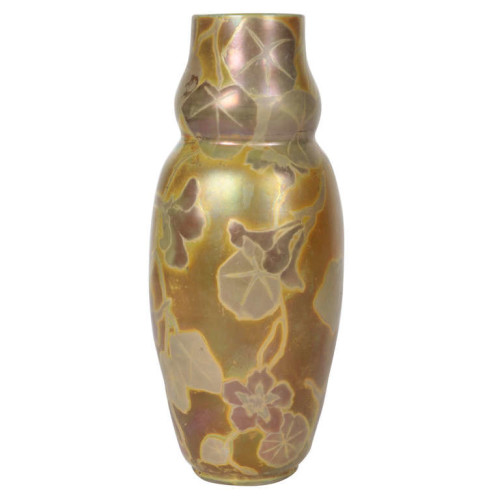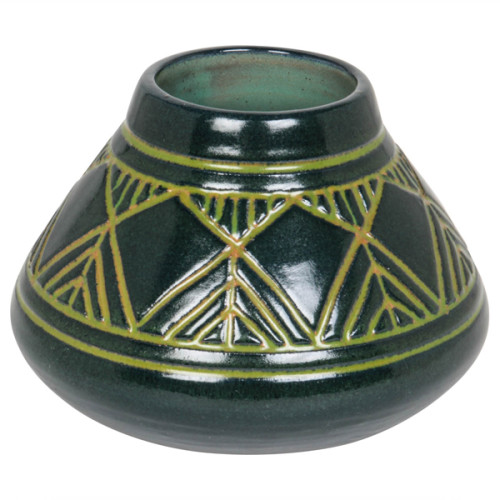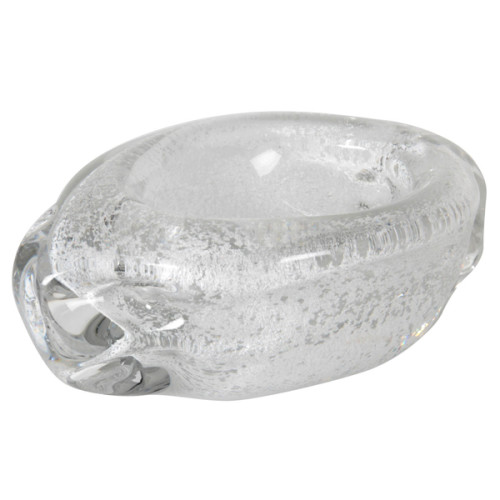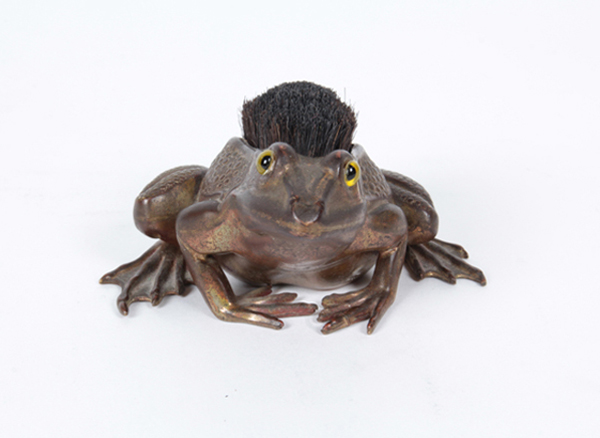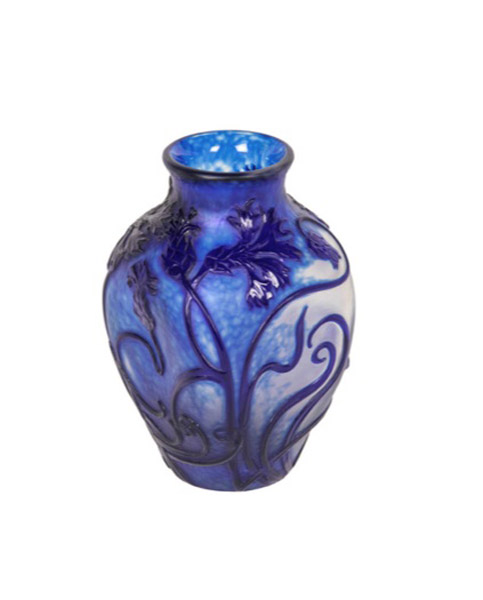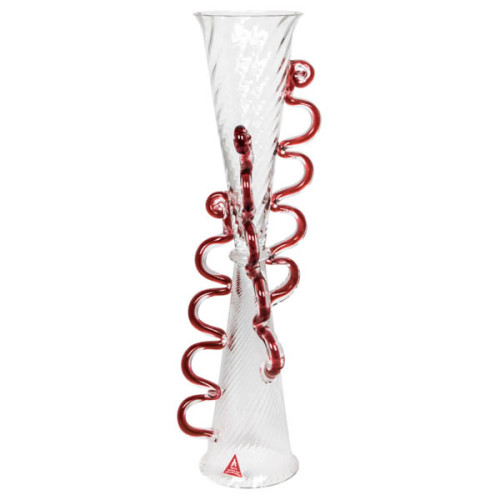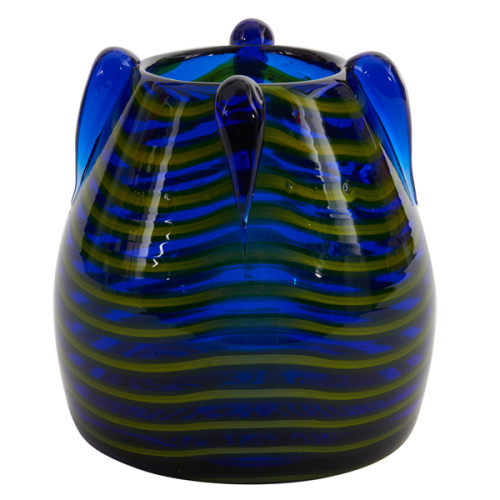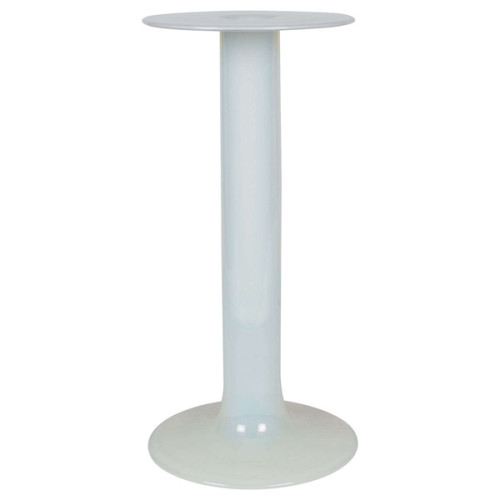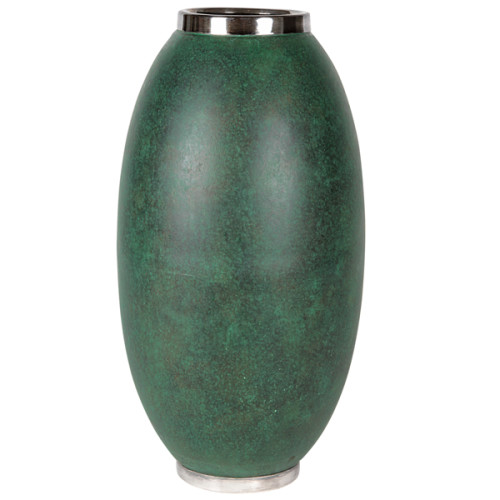Art
-
Katherine S. Dreier, “International Exhibition of Modern Art 1926”, Arranged by The Societe Anonyme for the Brooklyn Museum 1926
KATHERINE S. DREIER (1877-1952)
“International Exhibition of Modern Art 1926” 1926
Arranged by The Societe Anonyme for the Brooklyn Museum
Published by Societe Anonyme, New YorkDimensions:
Book: H: 10 1/16” x W: 7 ½”
Custom leather box: H: 11 ¼” x W: 8 ¼” x D: 1 9/16”
Custom silk slipcase: H: 12” x W: 8 5/8” x D: 2 1/8”Katherine Sophie Dreier was born on 10 September 1877 in Brooklyn, New York to Dorothea Adelheid and John Caspar Theodor Dreier, both immigrants from Bremen, Germany; she was the youngest of five children. Early on, Dreier manifested her dual interests in social issues and art. She was treasurer of the German Home for Recreation of Women and Children and helped to found the Little Italy Neighborhood Association in Brooklyn, New York. She studied art privately, then at the Brooklyn Art School and at Pratt Institute, and then with Walter Shirlaw (with whom Dreier’s sister, Dorothea, also studied). There was a strong identification in the Dreier home with German culture, and the family often traveled to Europe to visit relatives. Between 1907 and 1914, Dreier spent much of her time abroad, traveling, studying art, and exhibiting her work in one-artist shows. In New York, in 1916, through her work with the Society of Independent Artists, Dreier met Marcel Duchamp. He was to become a close friend and colleague, and an important figure in the history of the Societe Anonyme. In January 1920, Dreier, Duchamp, and Man Ray met in Dreier’s apartment in New York City to found the Societe Anonyme, a society to promote modern art among the American public. Dreier had wanted to call the society “The Modern Ark,” but Man Ray later claimed that he was the one to suggest the French phrase for “incorporated” instead. Dreier added the subtitle “Museum of Modern Art: 1920.” The Societe Anonyme sponsored many lectures, concerts, publications, and exhibitions concerning modern art, including the International Exhibition of Modern Art at the Brooklyn Museum in 1926. In spite of a major membership campaign in 1925, the Societe’s headquarters in New York City closed in 1928, and from this point on, the Societe Anonyme existed only through Dreier’s efforts. She continued to organize events that were sponsored by the Societe, and she accumulated artwork to add to the Societe Anonyme’s collection. In 1939, Dreier began developing a plan to open the Country Museum at her house in West Redding, Connecticut (the Haven), which would house the Societe Anonyme’s collection of artwork, as well as her private collection. After little success with other potential investors, Dreier approached Yale University about funding and maintaining the museum. Yale was hesitant, because of the high costs of renovating the Haven and maintaining it as a fire-proof museum, and instead offered as a compromise to take over the Societe Anonyme’s collection if it were moved to the Yale Art Gallery. Dreier agreed, and she began sending the collection to Yale in October 1941. In 1942, Dreier was still adamant about her desire to open the Country Museum and to use her private collection as its basis. She continued her attempts to convince Yale to fund her project, but when Yale gave a final negative answer in April, Dreier decided to sell the Haven. In April 1946, she moved to a new home, Laurel Manor, in Milford, Connecticut. She continued to add artwork to the Societe Anonyme collection at Yale, through purchases and through gifts from artists and friends. In 1947, she attempted to reopen membership to the Societe Anonyme and printed a brochure, but Yale blocked distribution of the brochure because of the ambiguous connection between Yale and the membership campaign. In 1948, Dreier and Duchamp decided to limit the activities of the Societe to working on a catalog of the collection and to acquiring artwork. On the thirtieth anniversary of the Societe Anonyme’s first exhibition, 30 April 1950, Dreier and Duchamp hosted a dinner at the New Haven Lawn Club, where they formally dissolved the Societe Anonyme. In June, a catalog of the Societe’s collection at Yale, Collection of the Societe Anonyme: Museum of Modern Art 1920, was published. Dreier died on 29 March 1952.
-
Amedee de Caranza Art Nouveau Rare Iridescent Art Glass vase 1903-1906
AMÉDÉE DE CARANZA (active 1875-1914) (b. Turkey / active France)
COPILLET ET CIE NoyonNasturtium vase 1903-1906
Blown glass with floral & foliate luster decoration handpainted on a muted iridescent ground.
Signed: A. de CARANZA (on the side near base)
Marks: Copillet et Cie, Noyon, 842 (twice)
For more information and related illustrations: European Art Glass (New York: Ray & Lee Grover, Charles E. Tuttle Publishers, Inc., 1970) pp. 69, 94-96; L’Art Du Verre En France 1860-1914, Janine Bloch-Dermant (Edita Denoel, 1974) pp. 36-37; Glass: Art Nouveau to Art Deco, Victor Arwas (New York: Abrams, 1987) pp. 56-58; L’Europe de L’Art Verrier, des Precurseurs de l’Art Nouveau a l’Art Actuel 1850-1990, Giuseppe Cappa (Liège: Mardaga, 1991) pp. 72-74.
H: 10″
Copillet, H.A. Thomas Henri Alfred Copillet was originally a printer, and produced a local newspaper in Paris. When he moved his works to 13 Fauburg de Paris he acquired a kiln in the process, and thus in 1903 was began a new glass works. His designers were Amedee de Caranza and Edouard de Neuville. They produced a whole range of Art Nouveau glassware, many with a dark iridescent finish. They also produced opaline glass, and glass panels for use in church windows. The company went bankrupt in 1906, although the new management (Lefevre and Lhomme) kept a little of the production going for a while, the factory was destroyed during the First World War.
-
Julia Edna Mattson – Univ. of North Dakota American Art Pottery Vase circa 1913-20
JULIA EDNA MATTSON (d.1967) Grand Forks, ND
UNIVERSITY OF NORTH DAKOTA Grand Forks, NDVase c. 1913-1920
Earthen-ware with blue-green glaze, incised with lime-green linear decoration
Marks: University of North Dakota, Made at School of Mines, Barclay, Grand forks, ND (Cobalt blue seal), JM (Julia Mattson)
For more information see: Barr, Paul E. North Dakota Artists. Grand Forks: University of North Dakota Library, 1954; Miller, Don. University of North Dakota Pottery: The Cable Years. Grand Forks: University of North Dakota Visual Arts Dept., 1999; Palmer, Bertha Rachael. Beauty Spots in North Dakota. Boston: Bruce Humphries, Inc., 1939
H: 3 5/8″ x Dia: 5 1/4″
Price: $3,250
Julia Edna Mattson worked as an instructor and later as Assistant Professor in the University of North Dakota’s Ceramic department between the years 1924-1963. Her designs reflect an interest in the Arts and Crafts movement in America and American Indian pottery. Early UND pottery is characteristic of the Arts and Crafts and Art Nouveau movement. The decoration of this vessel recalls the graphic designs found on Indian basketry as well as the Prairie School windows of Frank Lloyd Wright.
-
Andre Thuret French Art Deco Rare Handblown Art Glass Vase c. 1930
ANDRÉ THURET (1898-1965) France
“Organic” vase/bowl c. 1930
Handblown and formed clear glass with bubble technique encapsulating a frosty white oxide.
Signed: ANDRÉ THURET
H: 2 3/8″ x D: 4″ x W: 6 1/4″
Andre Thuret was one of the first modern French studio glass artists and a contemporary of Maurice Marinot. He was born on November 3, 1898 in Paris. It is by science that Andre Thuret came to art. It is in Thuret the engineer and the chemist who serve Thuret the vase artist. The scientist places at the disposal of the creator of forms, rates/rhythms and colors the fluid and transparent beauty of glass and the reactions of metallic oxides. He worked in a traditional glass blowing technique at a temperature often exceeding 1,000 degrees. Thuret exhibited at the Salon d’Automne in 1928 and 1932 and obtained his first plate of the Company of Encouragement to Art. He was invited to exhibit in the United States in 1929-1930. Andre Thuret received his Chevalier of the Legion of Honor in 1947.
-
Franz Xaver Bergman Art Nouveau “Frog” pen wipe c. 1905-1910
FRANZ XAVER BERGMAN (1861-1936) Austria
“Frog” pen wipe c. 1905-1910
Cold-painted bronze, boar’s hair bristles
For information see: Art Bronzes, Mich. Forrest (Schiffer, 1988).
L: 3 1/2″ x W: 3 1/2″ x H: 2″
Price: $1,675
A well-known animalier at the turn-of-the century, the sculptor Franz Bergman created a number of small bronzes in a variety of subject matter. Other figurative works were informed by the Jugendstil / Art Nouveau style and the European taste for the exotic as is found in his figures of rug merchants and camels. His animal sculptures, however, capture the Viennese tradition of naturalistic bronzes. The quality of the bronze casting shows tremendous detail, which was carefully brought out through the applied patination process known as cold painting.
-
Daum Frères / French Art Nouveau “Cornflower” vase c. 1897
DAUM FRÈRES Nancy, France
“Cornflower” vase c. 1897
Blown cobalt blue on a frosted glass ground with heavily wheel carved cornflowers, with an overall martele surface
Signed: Incised Daum Nancy with the Cross of Lorraine France
For more information on Daum Frs. see: Glass: Art Nouveau to Art Deco, Victor Arwas (NY: Abrams, 1987).
H: 4 3/4″
Price: $9,850
-
Borek Sipek BIBI I Art Glass Goblet 1996
BOŘEK ŠĺPEK (1949-2016) Prague, Czech Republic
Goblet “BIBI I” 1996
Blown clear glass with red looping details
Exhibited: The Twenty One (Millenium) Exhibition, Arzenal Gallery, Prague, 2000
For more information see: Sípek, Philippe Louguet, Dagmar Sedlická (Paris: Éditions Dis Voir, 1999); Borek Sipek and Christian Tortu: Collection Twentyone 2001 (Prague: Arzenal Edition, 2001)
H: 13″ x Dia: 4″
Price: $1,050
The Czech architect, furniture designer, and glass artist Borek Sípek was born in Prague in 1949. From 1964 to 1968 Borek Sípek studied furniture design at the Prague School for the Applied Arts. In 1969 he began to study architecture at the Hochschule für bildende Künste in Hamburg. In 1973 he studied philosophy at Stuttgart University. From 1977 until 1979 he was an academic assistant at the Hannover University Institute of Industrial Design. Borek Sípek took his degree in architecture at Delft Technical University. Then he taught design theory at Essen University until 1983. In 1983 Borek Sípek also opened an architecture and design practice in Amsterdam. He founded Alterego, a design business, with David Palterer. In the 1980s, Borek Sípek designed Postmodern furniture and glass objects, which brought him international renown. Borek Sípek’s designs are formally distinctive, both ingeniously conceived and sumptuous, and are often executed in unconventional materials and combinations of materials. Borek Sípek views design as an interpretation of culture. For this reason, he rejects the functional and rational approach to design and does not want striving for technical perfection to lead to disregard of individuality. In 1983 Borek Sípek designed “Bambi”, a fragile-looking tubular steel chair with brass fittings and a back covered in silk. In 1991 Borek Sípek designed the “PCSS” table with blue glass legs and metal fittings. Borek Sípek’s superlative glass objects are executed by glassblowers in Murano and Novy Bor. Borek Sipek is also known worldwide as an architect and has received prestigious commissions. Between 1993-2002 Borek Sípek worked on the Het Kruithuis Museum in ‘s Hertogenbosch (the Netherlands). In 1994 Borek Sípek designed the Kyoto Opera Houseentsteht das Opernhaus in Kyoto. In 1995 Borek Sípek designed a Paris boutique for Karl Lagerfeld. In 1990 Borek Sípek became a professor of architecture at the Academy for the Applied Arts in Prague, where he taught until 1998. Since 1999 he has taught at the Universität for angewandte Kunst in Vienna.
His works are included in major international museum and private collections throughout the US and Europe including Museum of Modern Art, Stedelijjk Museum, Denver Art Museum, The Corning Museum of Art, The Hauge Municipal Museum, Kunstmuseum in Düsseldorf and Design Museum in London. -
Lötz Witwe / Hans Ofner Austrian Art glass vase c. 1920
HANS OFNER attr. (1880-1939) Austria
JOH. LÖTZ WITWE Klostermühle, BohemiaVase c. 1920
Handblown cobalt glass with undulating metallic chartreuse bands, four applied glass teardrops at the rim
For related examples by Ofner see: Innen Dekoration, “Lötz glass by Hans Ofner,” 1906.
For the identical glass technique see: Lötz: Böhmisches Glas 1880-1940, Vol. 1, Helmut Ricke and Ernst Ploil (Munich: Prestel-Verlag, 1989), p. 294, ill. no. 357.
H: 4 1/4″ x Dia: 4 1/4″
Price: $3,500
-
Mazzega Murano / Italian Art Glass White opalescent tube top vase c. 1975
AV MAZZEGA MURANO (Italy)
Vase c. 1975
White opalescent blue blown glass with a bottom tube support and a flared
test tube style topFor related information see: Italian Glass Murano Milan 1930-1970, Helmut Ricke and Eva Schmitt (Munich: Prestel, 1997) illus. 66, 67; I Vetri di Fulvio Bianconi, Rossana Bossaglia (Torino: Umberto Allemandi & C., 1993) illus. 17, 21; Murano Glas 1945-1970, Marc Heiremans (Antwerpen: Galerij Novecento, 1989) illus. 181; I Vetri Venini, Franco Deboni (Torino: Umberto Allemandi & C., 1989) illus. 105.
H: 14”
Price: $3,200
-
Borek Sipek Bagatti Valsecchi Art Glass Goblet c. 1994
BOŘEK ŠĺPEK (1949-2016) Prague, Czech Republic
Goblet “BAGATTI VALSECCHI” c. 1994
Blown clear glass with blue bow details
Exhibited: The Twenty One (Millenium) Exhibition, Arzenal Gallery, Prague, 2000
For more information see: Sípek, Philippe Louguet, Dagmar Sedlická (Paris: Éditions Dis Voir, 1999); Borek Sipek and Christian Tortu: Collection Twentyone 2001 (Prague: Arzenal Edition, 2001)
H: 12″ x Dia: 4 1/2″
Price: $1,150
The Czech architect, furniture designer, and glass artist Borek Sípek was born in Prague in 1949. From 1964 to 1968 Borek Sípek studied furniture design at the Prague School for the Applied Arts. In 1969 he began to study architecture at the Hochschule für bildende Künste in Hamburg. In 1973 he studied philosophy at Stuttgart University. From 1977 until 1979 he was an academic assistant at the Hannover University Institute of Industrial Design. Borek Sípek took his degree in architecture at Delft Technical University. Then he taught design theory at Essen University until 1983. In 1983 Borek Sípek also opened an architecture and design practice in Amsterdam. He founded Alterego, a design business, with David Palterer. In the 1980s, Borek Sípek designed Postmodern furniture and glass objects, which brought him international renown. Borek Sípek’s designs are formally distinctive, both ingeniously conceived and sumptuous, and are often executed in unconventional materials and combinations of materials. Borek Sípek views design as an interpretation of culture. For this reason, he rejects the functional and rational approach to design and does not want striving for technical perfection to lead to disregard of individuality. In 1983 Borek Sípek designed “Bambi”, a fragile-looking tubular steel chair with brass fittings and a back covered in silk. In 1991 Borek Sípek designed the “PCSS” table with blue glass legs and metal fittings. Borek Sípek’s superlative glass objects are executed by glassblowers in Murano and Novy Bor. Borek Sipek is also known worldwide as an architect and has received prestigious commissions. Between 1993-2002 Borek Sípek worked on the Het Kruithuis Museum in ‘s Hertogenbosch (the Netherlands). In 1994 Borek Sípek designed the Kyoto Opera Houseentsteht das Opernhaus in Kyoto. In 1995 Borek Sípek designed a Paris boutique for Karl Lagerfeld. In 1990 Borek Sípek became a professor of architecture at the Academy for the Applied Arts in Prague, where he taught until 1998. Since 1999 he has taught at the Universität for angewandte Kunst in Vienna.
His works are included in major international museum and private collections throughout the US and Europe including Museum of Modern Art, Stedelijjk Museum, Denver Art Museum, The Corning Museum of Art, The Hauge Municipal Museum, Kunstmuseum in Düsseldorf and Design Museum in London.
-
Otto Heintz / Heintz Art Metal Shop Grand verdigris “Silver Crest” vase c. 1925-30
OTTO HEINTZ, New York
HEINTZ ART METAL SHOP Buffalo, New York
Grand verdigris “Silver Crest” vase c. 1925-30
Bronze with a rich green patina; sterling silver collar and foot
Made by the Heintz Art Metal Shop, Buffalo, NY
Marks: Silver Crest logo with STERLING DECORATED BRONZE, conjoined H A M S in diamond shape, 1080
For further information see: The Arts & Crafts Movement in New York State: 1890s-1920s. Coy L. Ludwig (Hamilton, NY: Gallery Assoc. of NY State, 1983) p. 90.
H: 14 3/4”
The Heinz shop used sterling silver applied as floral ornamentation to bronze. The objects were distinguished by a variety of patinas and machine-shaped bases-very different from the hammered look of most Arts and Crafts metal works. Despite the death of its founder Otto Heinz in 1918 at the age of 41, the company continued and produced a more modern line entitled Silver Crest.


